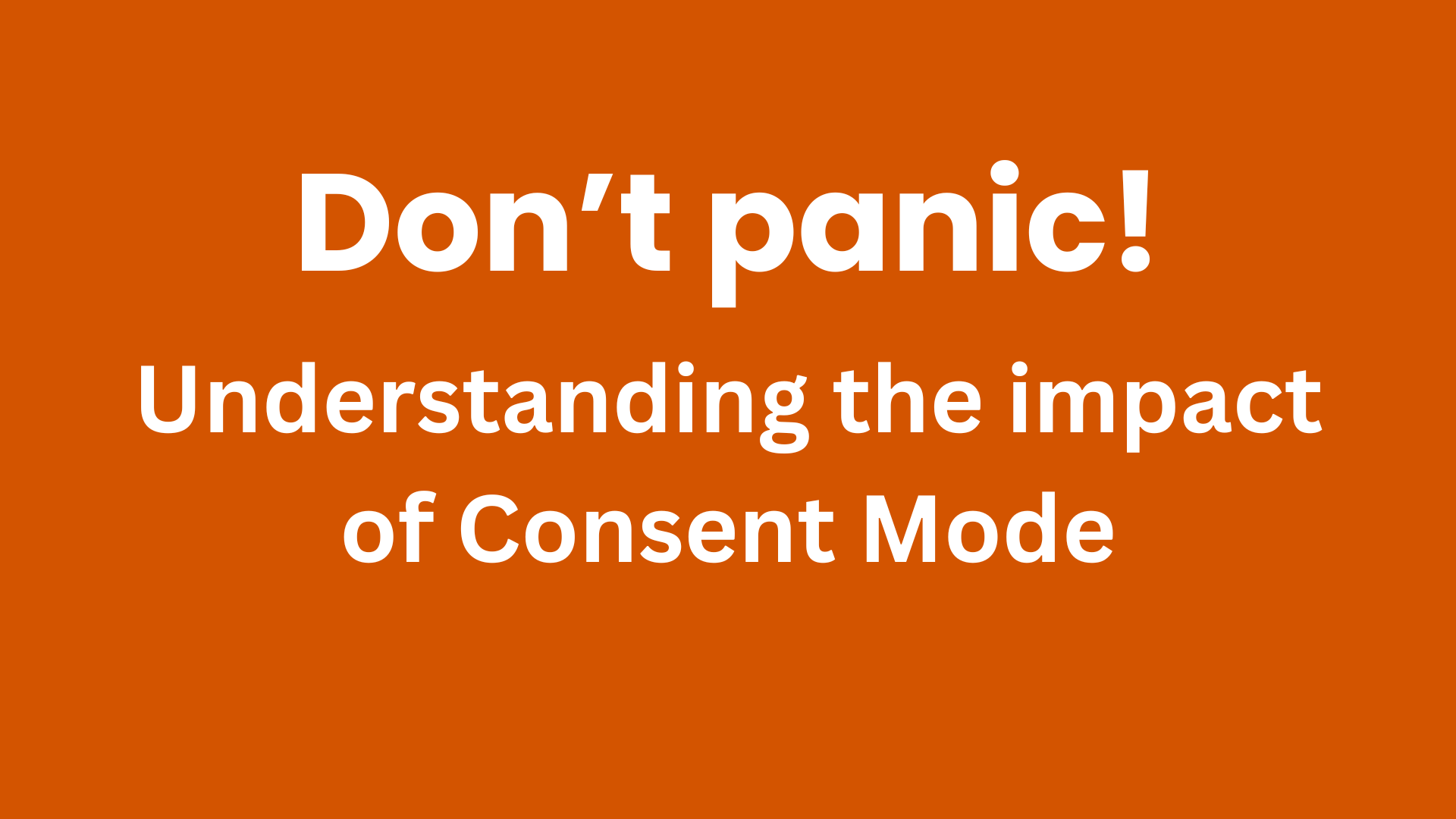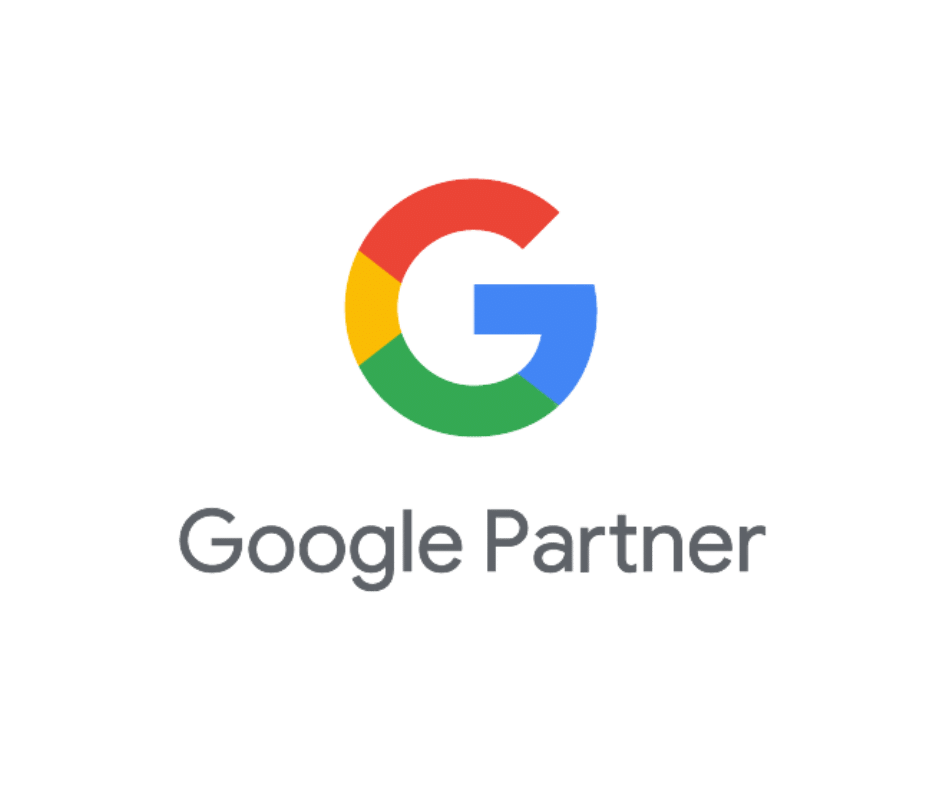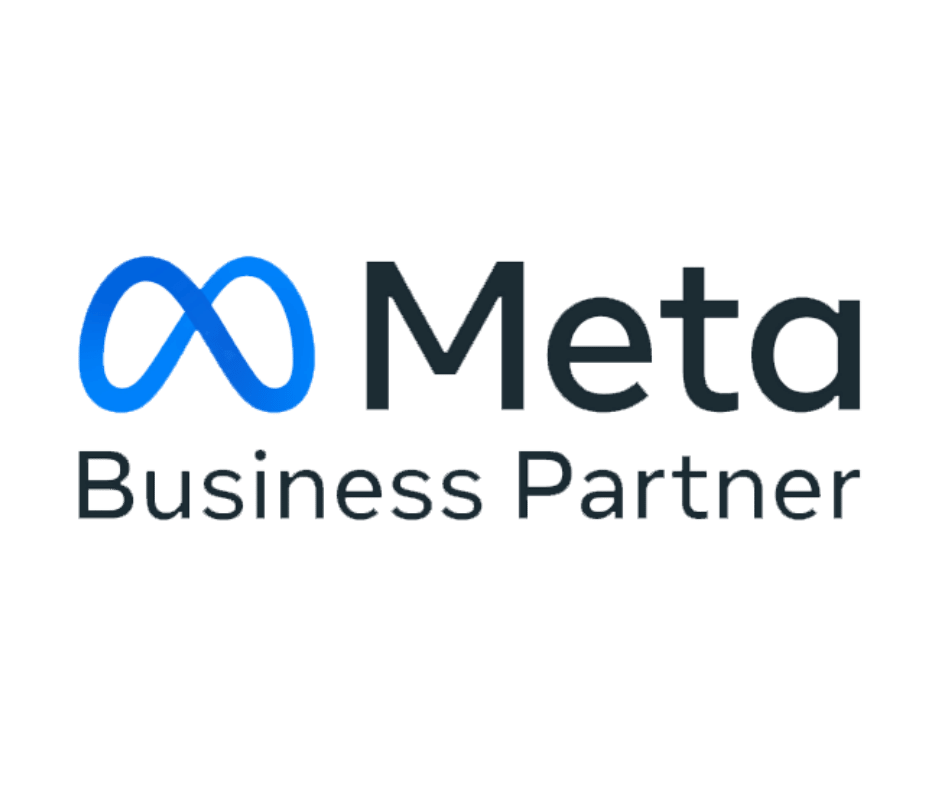If you aren’t currently using Google Consent Mode, when you turn it on, there will be some impact, both positive and negative to your data, as well as impact to your level of GDPR / privacy compliance. This article helps you understand what to expect, so that you don’t panic when you turn on Consent Mode and a large portion of your GA4 data disappears from that point onwards! Read on to better understand the potential impact of Google Consent Mode.
What is consent mode?
Consent Mode is a way of applying visitor preferences for their privacy to the use of cookies and scripts on a website. Google Consent Mode V2 requires setting default states for consent in 7 buckets (normally “denied” for 5 of them) PLUS the ability for a visitor to UPDATE those consent states from denied to “granted” via a banner that is compatible with consent mode (some banners are not and just pointless warnings). The updated consent states also need to persist while the user navigates around the site (handled by the banner script). Setting the default consent states can either be manually coded or handled by a banner script in GTM. Google now requires the use of Consent Mode V2 for anyone using Google Ads for their website.
Note: Consent Mode V2 has 7 buckets. V1 just had 5 buckets.
Here’s what happens in various scenarios.
If consent mode is not used at all:
- All Page Hits are tracked in GA4.
- Advertising learning effectiveness, ad remarketing and key event (conversions) tracking are impaired << Google will not do any modelling and relies on observed data only.
- Not GDPR compliant.
So: Good for GA4 numbers. Bad for Advertising effectiveness. Bad for GDPR.
If consent mode is used and all tags are completely blocked until consent is explicitly given via a consent banner, this is called “Basic” mode:
- All page hits are blocked completely until a user Accepts All.
- Only subsequent page hits will be tracked in GA4.
- If the user never consents via a banner, Googles can use basic modelling for Advertising and Key Event tracking to provide some info and Google does NOT do any behavioural modelling (page hits etc) because it cannot send any cookieless pings (tags are all blocked remember).
- This helps be GDPR compliant.
So: Bad for GA4 numbers. Good for Advertising effectiveness. Good for GDPR.
If consent mode is used but tags are allowed to fire BEFORE consent is given via a banner, this is called “Advanced” mode:
- Before a user clicks Accept All, Cookieless Page hits are sent to GA4. They are tagged as “G100” consent state (“anonymous”). These will NOT appear in the real-time view in GA4, but can appear in page hit reporting the next day, from the page on which a user consents, onwards.
- Site Behaviour, Ads, remarketing and Key Event tracking are all modelled together to anonymously to provide useful data so that over time, GADS data will be much improved, but only if hit thresholds are reached (see below), which means smaller sites gain less benefit, apart from compliance. For sites with lots of traffic, GA4 data in Advanced mode is improved compared Basic mode, but obviously not as good as the perfect GA4 pageview data when consent mode is not used at all.
- Once a user clicks “Accept All”, all new page hits and user interactions are sent to GA4 as “G111” consent state (“personal tracking”) and the G100 page hit for the page on which they used a consent button is also converted to “personal tracking” as if the user had allowed consent before landing on that page. Pages browsed before that page on which they consented are not converted and thus remain anonymous G100 data. Therefore, it’s ideal to enforce users to to interact with the cookie banner immediately on landing on a website so that they can consent or reject immediately, so that landing page data like “source / medium” is retained for those that consent, rather than losing it to “direct traffic” (unknown). https://support.google.com/google-ads/answer/10000067?hl=en-GB
- This is being treated as GDPR compliant until anyone proves otherwise.
So: Good but not perfect for GA4 numbers. Good for advertising effectiveness. Good for GDPR.
Why did my GA4 data suddenly dip after installing Google Consent Mode v2?
Hopefully it’s clear from the above that when you install consent mode, your future GA4 data will drop because if a visitor does not consent via a cookie banner, GA4 cannot use the data. For smaller sites with less traffic, it will drop substantially. For larger sites that qualify for modelling, the impact will be less pronounced. A lot of people thought their traffic had dropped in March 2024 and were blaming it a Google search core update, but it’s fair to say that many of these people also implemented GCMv2 around the same time due to Google’s emails warning them of the deadline.
Mitigating the impact of data lost in GA4 due to Consent Mode:
If Consent Mode is implemented, as you’ve seen, the data in GA4 is affected, because some users will not consent.
To mitigate this issue on WordPress sites, we use 1st party tracking, running in cookieless mode for compliance, to track real page views and events. This can then be compared to GA4 data and used to make assumptions about conversion numbers and hits across the board.
Notes on modelling thresholds for consent mode:
In GA4 Admin > Data Display > Reporting Identity, Google normally defaults to “Blended” which is a mixture of Observed data and Modelled data if available. Modelled data only becomes available after certain conditions are met.
For behavioural modelling (page hits, user types etc):
The property collects at least 1,000 events per day with analytics_storage=’denied’ for at least 7 days.
The property has at least 1,000 daily users sending events with analytics_storage=’granted’ for at least 7 of the previous 28 days. << 1000 people daily will have to click “Accept All” on a banner.
https://support.google.com/analytics/answer/11161109?hl=en
For ads modelling:
You have a daily ad click threshold of 700 ad clicks over a 7 day period, per country and domain grouping.
User conversion rates vary based on user consent status. Consented users are typically 2–5x more likely to convert than unconsented users.
https://support.google.com/google-ads/answer/10548233
Contact TT.D – Your Local Google Consent Mode Experts
For more information on how Google Consent Mode may impact your GA4 data and the latest digital marketing trends please bookmark the TT.D Insights blog. To discuss our range of digital marketing services please contact us today.











